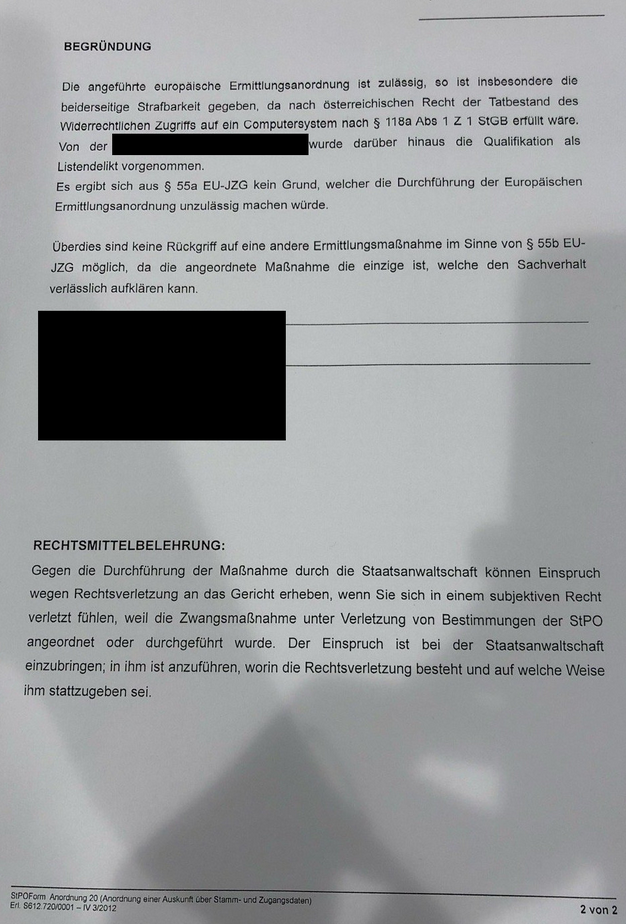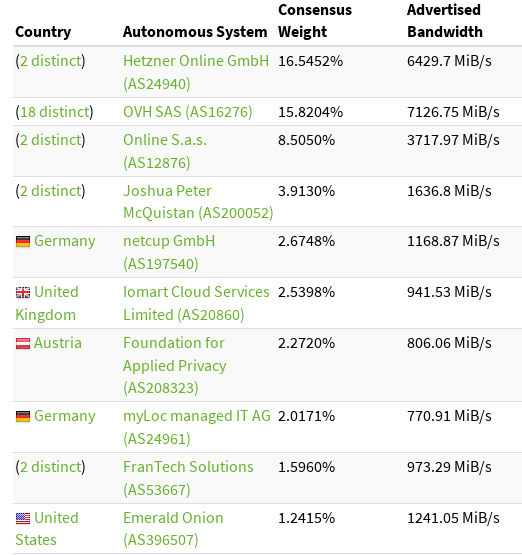Transparency Report #1
This is our first transparency report. It was already overdue, but since there wasn't much to report about it took us longer then expected. In this short report we publish how many law enforcement requests we received. We did not get any requests from intelligence agencies. This first report covers the time period from since we started running Tor relays until yesterday: 2018-02-21 - 2020-11-21
When interpreting the number of LEA (Law Enforcement Agency) requests, keep in mind that we are forwarding multiple Gbit/s of Tor bandwidth, and this report covers an extended time period during which over 60 Petabytes of Tor traffic got routed through our infrastructure. As of today, we are the 3rd largest Tor exit relay operator globally, accounting for about 5% of Tor's total exit capacity.
Tor Exit Relay IP Address Requests
The following list shows the total law enforcement agency requests we received, grouped by the country in which the requesting authority is located (which is not necessarily the same country from where the request actually originated):
- Austria: 5 (3 of them were foreign requests received via Austrian authorities)
- Germany: 2
- Russia: 2
- India: 2
- Norway: 1
- Poland: 1
- USA: 1
As a side note: It is not always trivial to tell whether an email comes from an authentic law enforcement agency due to the international nature of these requests, but we can answer all requests equally since we do not have any data anyway (no matter whether the LEA request is authentic or not).
We answer these requests by explaining what Tor is, and that we do not have any data or logs that would help to identify the actual user of the IP address at the time. No lawyers were involved or needed.
All requests reached us via email with one exception.
In October 2020, two law enforcement officers visited our office in Vienna and handed us an investigation order (not a search warrant - see below), from the public prosecution office which requested information related to one of our Tor exit relay IP addresses. Since none of our authorized persons were on-site to answer the request directly at the time, we had a phone call with them on the same day and after explaining that the IP address on the investigation order is used for an anonymity service (Tor) the situation was quickly clarified since they knew what Tor is already.
Since we had contact with the cybercrime competence center, acting on a national level in the past (they even were present at one of our past presentations about our Tor exits) and our IP addresses were known to them as Tor exit IPs already, we were a bit surprised by this visit. But the local law enforcement officers were professional, friendly and also so kind to explain the difference: In this case it was an European investigation order. A public prosecution office in another EU country contacted the public prosecution office responsible for Vienna, which then tasked the local law enforcement agency to investigate (unlike in the other international requests from outside the EU where the national cybercrime competence center handled the requests).
Investigation Order


DNS Privacy Services (DoT and DoH)
To meet Mozilla's policy requirements for DoH resolvers, we also publish the following numbers related to our DNS privacy service:
- Total law enforcement requests received: 0
- Total amount of censorship demands received: 0
Do not hesitate to contact us if you have any questions. You can reach us at contact(at)appliedprivacy.net. Starting with this report, we aim to publish transparency reports on a yearly basis. If you want to support the operation of our privacy services please have a look at our donation page.

